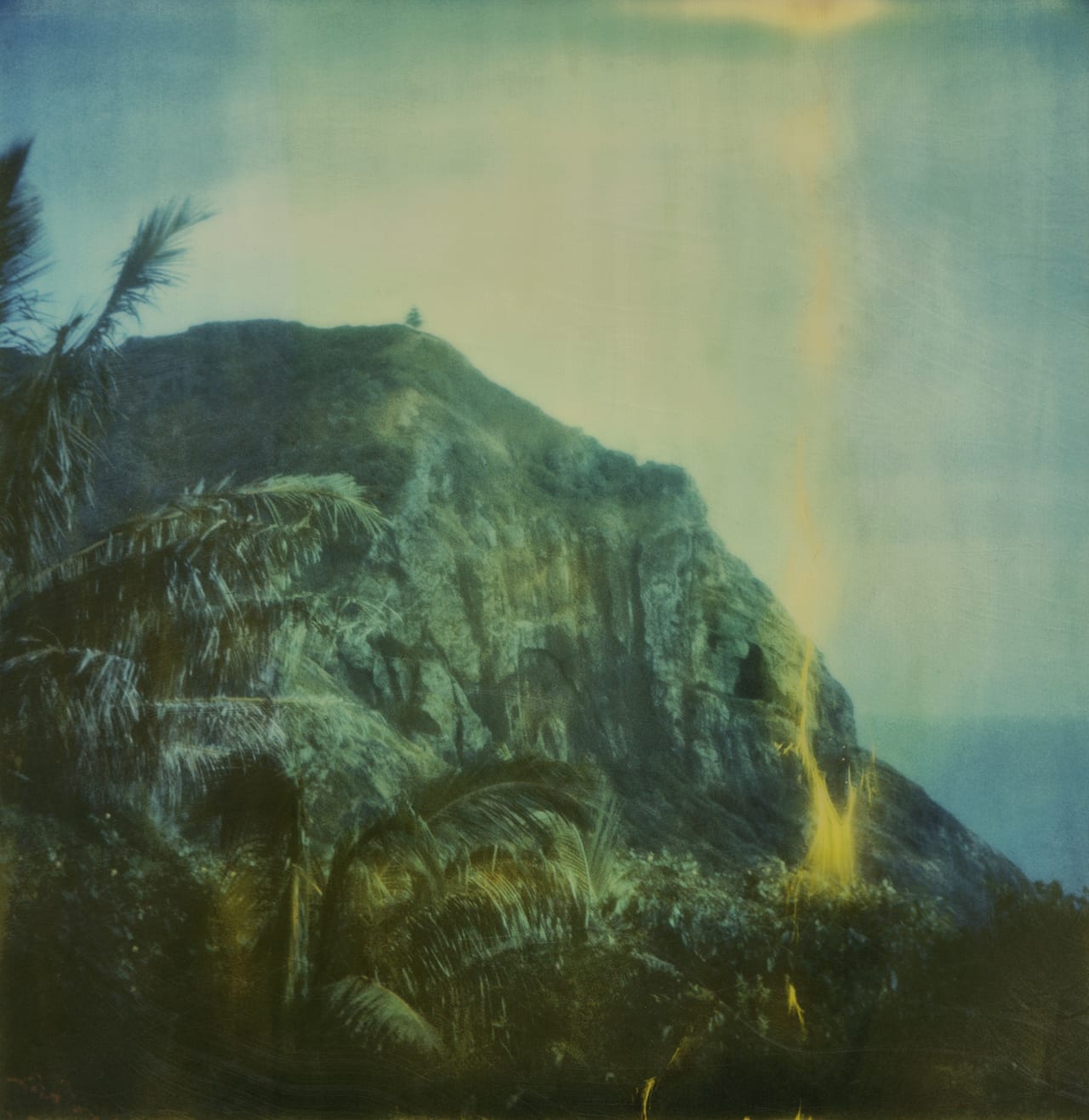Adam grew up living on a boat; her father is a shipwright, and she and her family sailed around the world for seven years, intermittently living in Trinidad and returning to the UK when Adam was nearly 14. Her father would tell her stories about the sea to help ease the pain of leaving her friends and home behind, but returning back to land, Adam found that she had little to prove her adventures.
“That was partly what inspired me to become a photographer — this kind of listlessness, and lack of photographic evidence,” she says, adding that because they never made it to the Pacific Islands, “Pitcairn and the Mutiny on the Bounty story was, in an abstract way, connected to the whole idea of why I agreed to go.”
Adam presents the island’s peculiar and layered history through portraits and landscapes, often shot on expired polaroid film, but also through family trees, court documents from the case, and posters from film adaptations of the Bounty story. “Pitcairn isn’t just a random speck on the map,” she explains, “it has a cult following.”
It is not an easy story to document, and Pitcairn’s remote location made creating the work even harder. It took Adam three flights, a water taxi, and a 38-hour boat to reach the island, which is located almost exactly between Chile and New Zealand. The journey took almost three days and Adam brought four large suitcases packed with over 300 rolls of film.
The final boat from Mangareva, the transit point between Tahiti and Pitcairn, leaves once every three months with only nine seats, mostly taken up by ageing islanders who need medical attention. It took Adam over a year to be given a place on the boat, and, once there, she had no choice but to stay for the full 96 days until it returned, making her the only solo female traveller to visit in over a decade.

